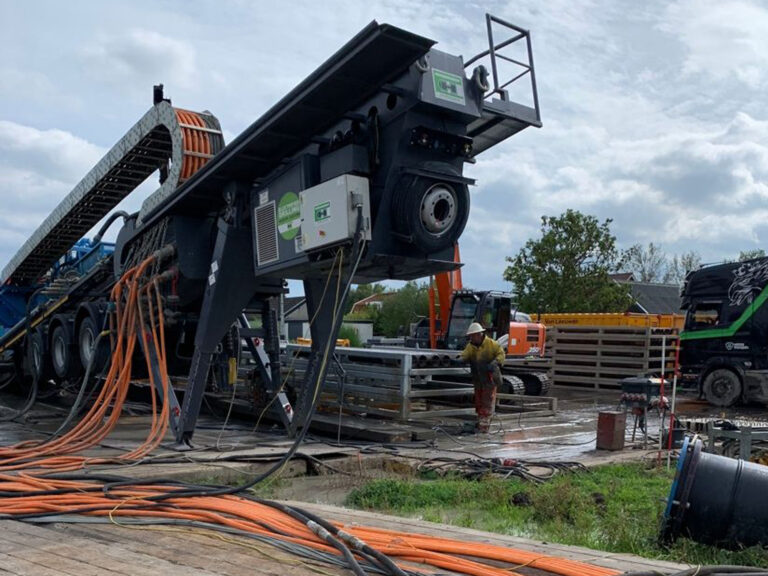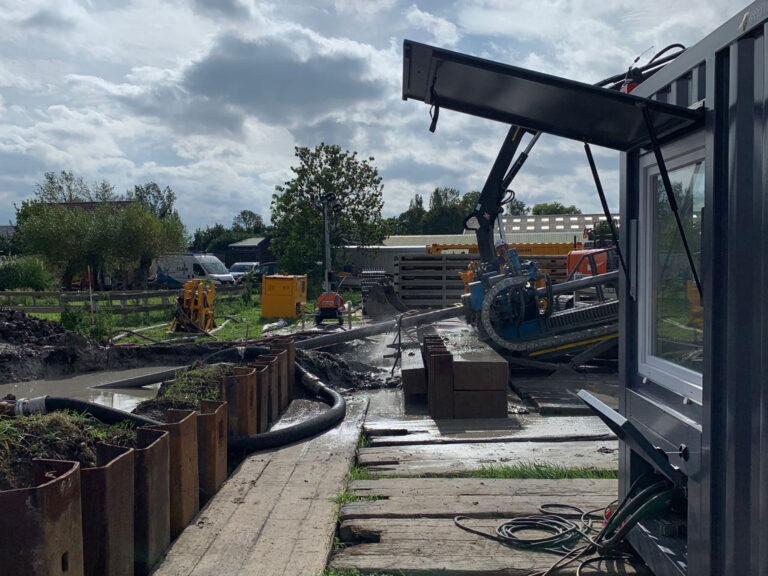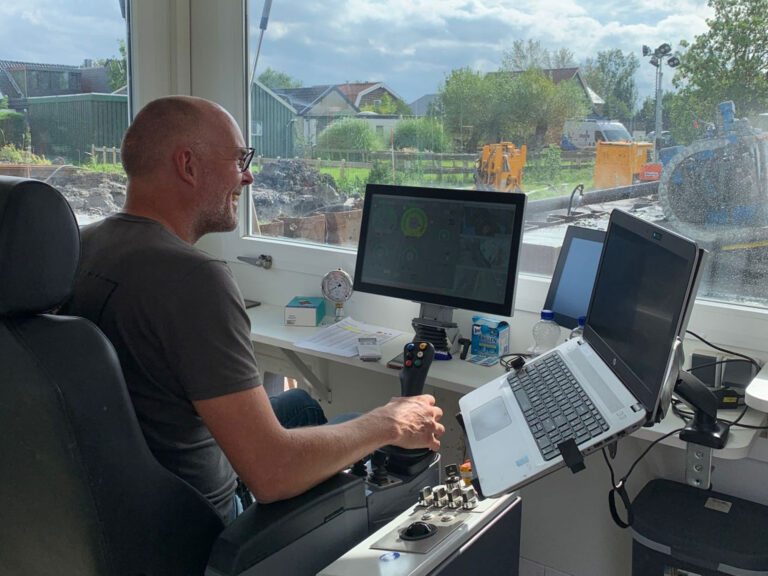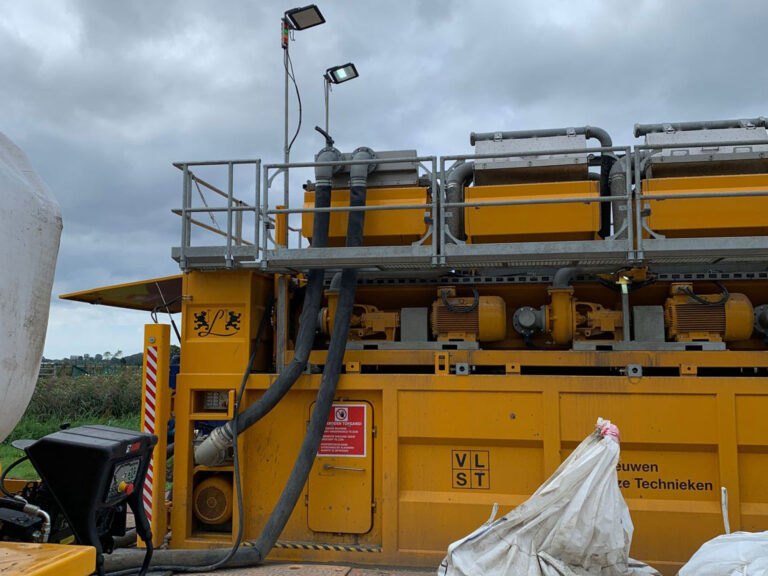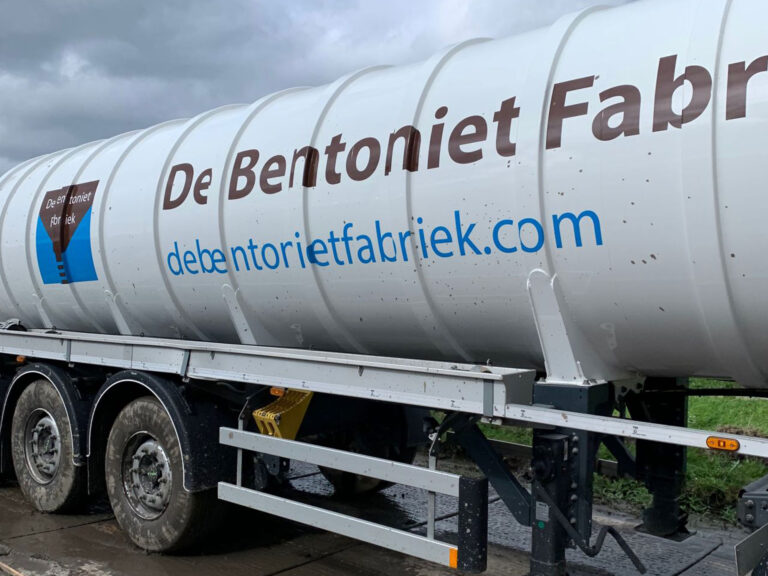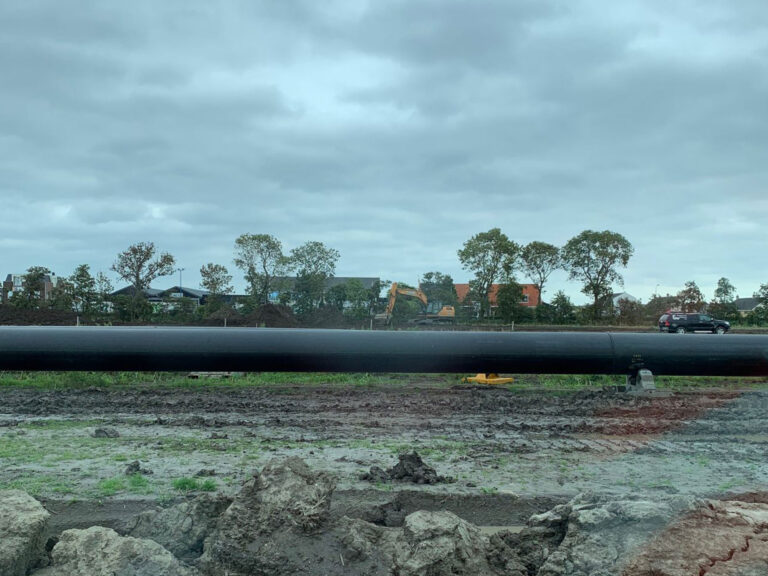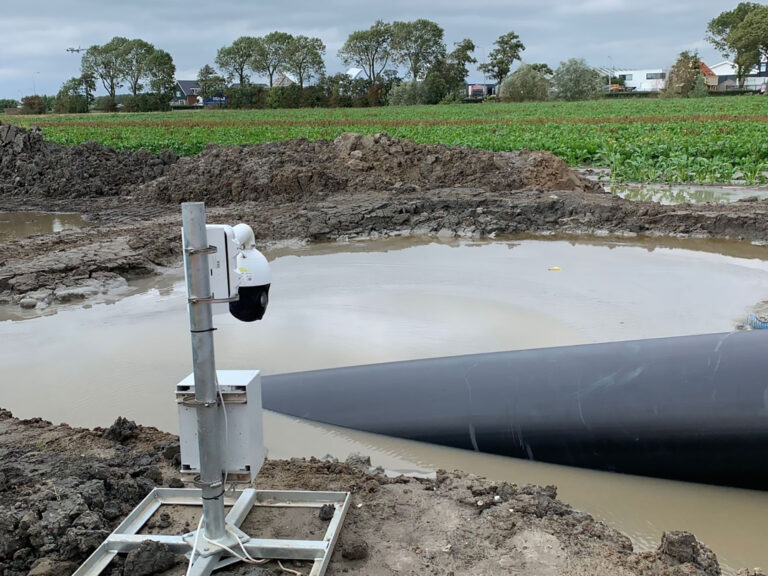HDD DRILLING AT ZWANENBURG – CONSTRUCTION OF WASTE WATER TRANSPORT PIPELINES
Construction of waste water transport pipelines from AWS Haarlem-Schalkwijk and AWS Heemstede (waste water plants) to AWZI Zwanenburg (sewage treatment plant). Also the realisation of a sludge transport pipeline from AWZI Zwanenburg to AWZI Haarlem-Waarderpolder for the Rijnland Hoogheemraadschap (Polder Board).
TECHNICAL SPECIFICATIONS
Client
BAM Hoofdaannemer, Leiding Eigenaar Hoogheemraadschap van Rijnland.
Implementation period
October 2023
Bore Lenght
1,3 km
Bore Cross-section
800 mm HDPE pipes attached to one another by means of mirror welding.
Activities
The HDD technology is used to insert the pipelines through the polder ground to cause the least possible hindrance to landowners and municipalities. The challenges often lie in the space available behind the drilling works, required to compile the drill strings to be used. All is progressing well, thanks to good collaboration with BAM and with the various land users and owners. Where the drilling works intersect a water sealing clay layer, drill grouting is used in order to reseal this layer upon extraction of the pipes.
Special Circumstances
This assignment is a UAV-GC contract, where extra responsibility lies with the main contractor and whereby VLST supports BAM in this process. Drilling has taken place under a number of important motorways A9 and A200 and railways, but also close to one of the Schiphol runways, where the drilling team could literally watch planes fly by every 3 minutes. VLST was able to combine two drilling locations, in order to limit hindrance and reduce costs for the client. The Meet in the middle technique was chosen. The trajectory required by the client comprised 3 directional drilling works adjacent to each other, whereby we undertook drilling in a triangular shape. When drilling from A to B through aquifers, there is a risk of seepage in the event of excess pressure, resulting in the water literally rising above ground level. The solution is to build protective mounds, in order to keep the surrounding areas dry. VLST opted to work with more dense bentonite during the drilling process, and to fill the annular gap with grouting after drilling. Finally, a special sealant was injected in any areas necessary, upon completion.

